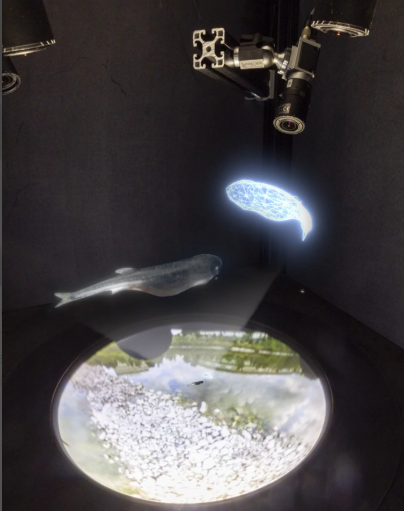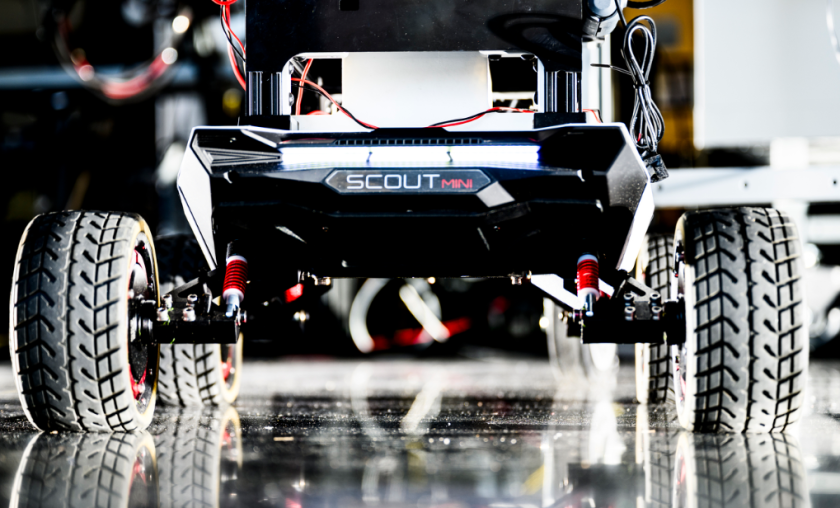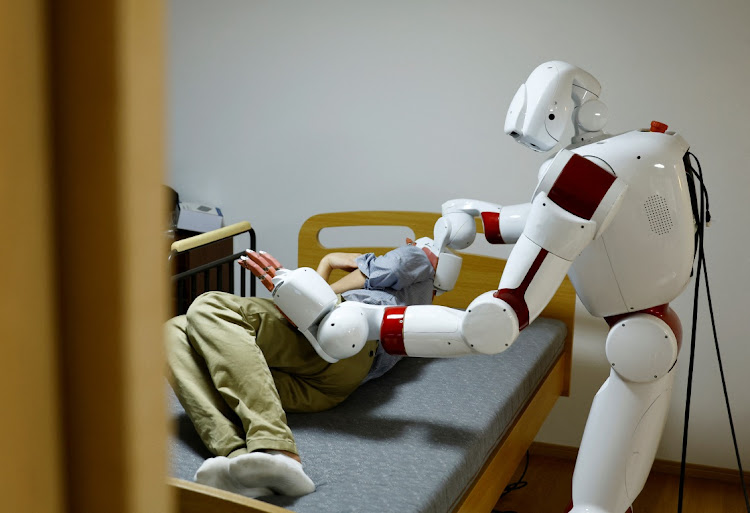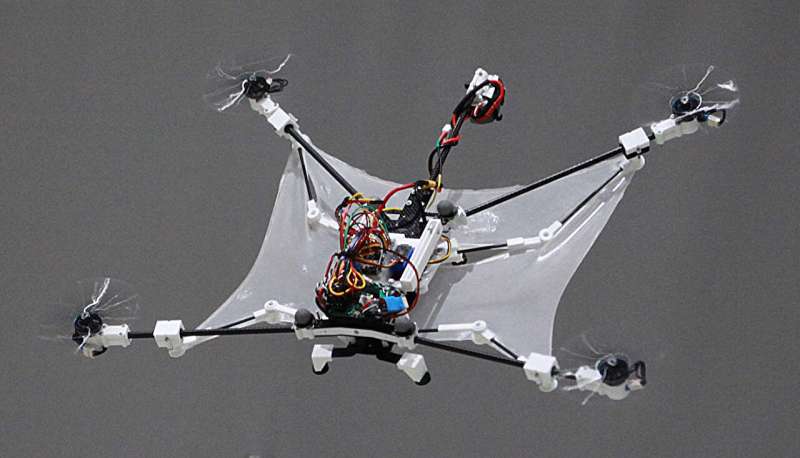
Drones that we see today are very well equipped with focusing systems that allow for high-resolution imaging, precise navigation, and advanced object tracking capabilities. However, when it comes to executing sharp turns, a key limitation of today’s drones, the tech is still in its early stages of development.
Researchers at Pohang University of Science and Technology and the Agency for Defense Development (ADD)’s AI Autonomy Technology Center in South Korea have made an effort to develop a drone that mimics the agility of nature’s aerial acrobats, blending soft robotics, biomimicry, and machine learning into a compact, high-performance flying machine.
Conventional quadcopters are a bit like swimmers who can’t use their hands, which means they are lacking in flexibility or control that could be achieved with more advanced or nature-inspired mechanisms. The drones can be compared to trying to navigate a shopping cart through a crowded grocery store – cumbersome and difficult to make sharp turns quickly enough to avoid collisions.
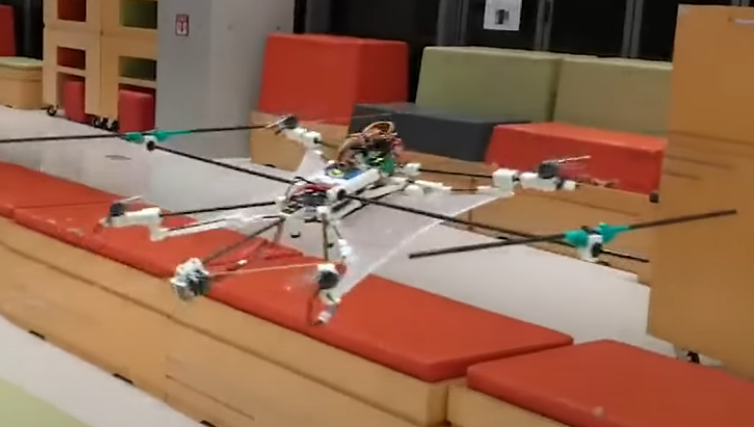
The Flying Squirrel Drone
Researchers have sought to address this limitation by drawing inspiration from the gliding mechanics of flying squirrels. When a flying squirrel needs to make a sharp turn to avoid a branch, it doesn’t just rely on muscle power, it shapes its body and wings to work with the air, not against it. This is biomimicry at its finest: learning from what evolution has spent millions of years perfecting.
The team has equipped the flying squirrel drone with foldable silicone wings that can be deployed to generate additional air resistance, thus enhancing maneuverability. It has the following components:
- Foldable Wings: Lightweight silicone wings (weighing just 24 grams) that can be folded and unfolded using a crank mechanism, allowing the drone to adjust its shape mid-flight. When properly deployed, they generate additional air resistance that significantly improves the drone’s ability to track and follow desired flight paths, especially during those critical moments when split-second adjustments make the difference between a smooth flight and an expensive crash.
- Thrust-Wing Coordination Control (TWCC): A sophisticated control system that coordinates the drone’s propellers and wings. TWCC determines the optimal timing for wing deployment to assist in desired movements without compromising stability.
- Physics-Assisted Recurrent Neural Network (paRNN): Modeling the aerodynamics of deformable wings is complex. The paRNN uses real flight data and incorporates physical principles to predict aerodynamic forces accurately, enabling real-time adjustments during flight.
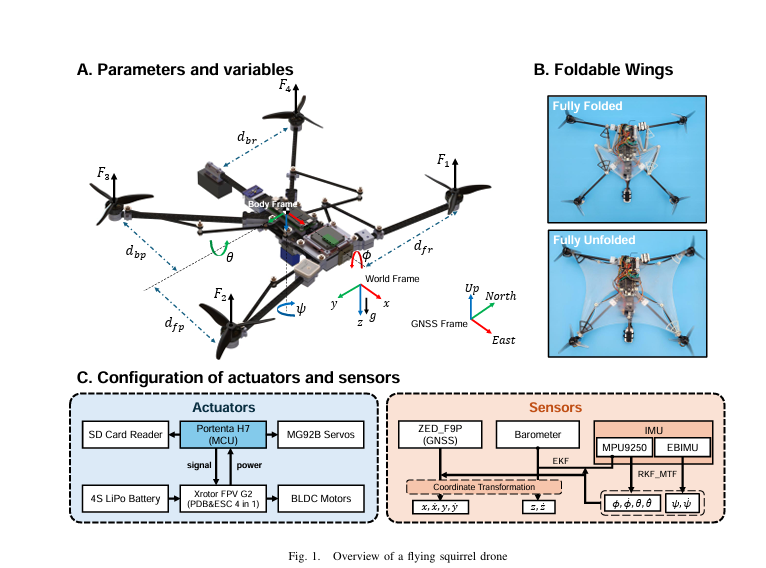
What makes this system particularly clever is that it doesn’t just blindly follow a pre-programmed routine. Instead, it constantly evaluates whether deploying the wings would be helpful at any given moment. It’s like having a co-pilot who knows exactly when to deploy a parachute and when to rely on the engines.
When traditional control methods reach their limits, like when a drone needs to make a turn so sharp that its motors would typically max out, the wing system kicks in to provide that extra control authority, much like how a racecar driver might drift to take a corner faster than pure acceleration would allow.
The Winged Drone Outperformed The Traditional Model
In outdoor tests flying at over 16 mph, the flying squirrel drone outperformed a conventional wingless drone by a substantial margin. The difference was particularly noticeable during obstacle avoidance maneuvers.
The most interesting part of the outdoor session was how the flying squirrel used its wings to generate additional lift. During sharp turns, traditional drones generally have a tendency to sink vertically as the batteries can’t provide enough juice for both forward momentum and maintaining altitude during aggressive maneuver, so when the squirrel drone was made to face such a scenario, it used its wings to generate additional lift in the vertical direction, thus preventing the sinking behavior.
Also, in comparison to the wingless drone, the new innovation showed 13.1% improvement in tracking performance.
What’s more impressive is that in some scenarios, the winged drone could successfully navigate obstacles that the conventional drone simply couldn’t avoid at all. It’s like the difference between a sports car and an off-road vehicle when the terrain gets rough, sometimes having the right adaptations matters more than raw power.
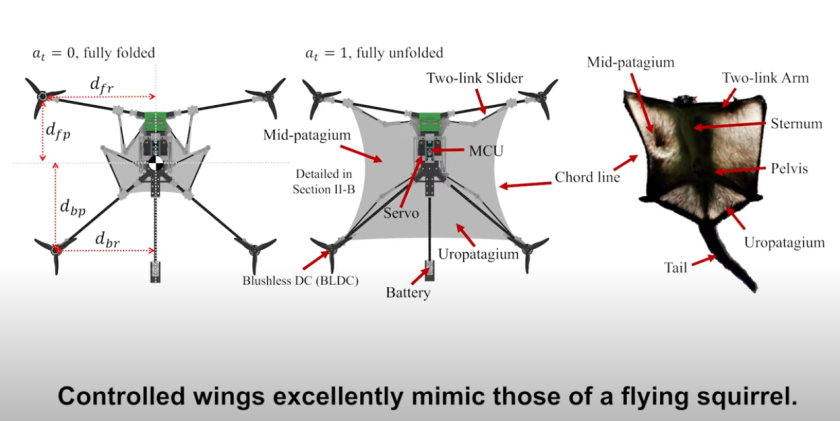
Takeaway
This innovation opens doors to drones that can navigate complex environments with unprecedented agility. Imagine search and rescue drones that can weave through disaster zones, delivery drones that can handle gusty urban canyons, or inspection drones that can maneuver in tight industrial spaces.
One of the best things about this approach is that it doesn’t require more powerful motors or batteries, in fact, it simply makes better use of the air itself. Quite like how sailing vessels can actually move faster than the wind by properly configuring their sails.
With these kinds of nature-inspired adaptations, drones can achieve greater agility, efficiency, and obstacle avoidance capabilities than ever before. The time is not far off when we will witness the future of aerial robotics, with innovations inspired by nature that push the boundaries of what’s possible in flight and maneuverability.
Source: Tech Xplore

